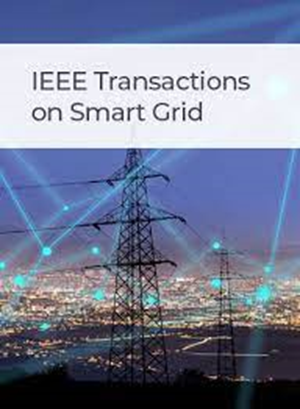A Lightweight Framework for Measurement Causality Extraction and FDIA Localization
IF 8.6
1区 工程技术
Q1 ENGINEERING, ELECTRICAL & ELECTRONIC
引用次数: 0
Abstract
False Data Injection Attack (FDIA) has become a growing concern in modern cyber-physical power systems. Many learning-based approaches have utilized the statistical correlation patterns between measurements to facilitate the detection and localization of FDIA. However, these correlation patterns are susceptible to the distribution drift of measurement data, which can be induced by changes in system operating points or variations in attack strength, leading to degraded model performance. Causal inference serves as a promising solution to this problem, as it can embed the physical relationship between measurements as causal patterns that are robust against data distribution drifts. However, causal inference is also computationally demanding. To leverage its advantages and address the computational cost issue, this paper proposes a lightweight framework based on causal inference and Graph Attention Networks (GATs) to extract causal patterns between measurements and locate FDIAs. The proposed framework consists of two levels. The lower level uses an X-learner algorithm to estimate the causality strength between measurements and generate Measurement Causality Graphs (MCGs). The upper level then applies a GAT to identify the anomaly patterns in the MCGs. Since the extracted causality patterns are intrinsically related to the measurements, it is easier for the upper level model to identify the attacked nodes than the existing FDIA localization approaches. A physical neighbor masking strategy is implemented to cut down the computational cost of both levels. The performance of the proposed framework is evaluated on the IEEE 39-bus and 118-bus systems. Experimental results show that the causality-based FDIA localization mechanism provides a lightweight solution to interpretable measurement causality extraction and robust FDIA localization.测量因果关系提取和 FDIA 定位的轻量级框架
虚假数据注入攻击(FDIA)已成为现代网络物理电力系统日益关注的问题。许多基于学习的方法利用测量之间的统计相关模式来促进FDIA的检测和定位。然而,这些相关模式容易受到测量数据分布漂移的影响,这可能由系统工作点的变化或攻击强度的变化引起,从而导致模型性能下降。因果推理是解决这个问题的一个很有希望的解决方案,因为它可以将测量之间的物理关系嵌入到因果模式中,这种模式对数据分布漂移具有鲁棒性。然而,因果推理也需要大量的计算。为了利用其优势并解决计算成本问题,本文提出了一个基于因果推理和图注意网络(GATs)的轻量级框架来提取测量之间的因果模式并定位fdi。建议的框架包括两个层次。较低的层次使用x学习算法来估计测量之间的因果关系强度,并生成测量因果关系图(Measurement causality graph, mcg)。然后上层应用GAT来识别mcg中的异常模式。由于提取的因果关系模式与测量值内在相关,因此上层模型比现有的FDIA定位方法更容易识别受攻击的节点。采用物理邻居掩蔽策略降低了两层的计算成本。在IEEE 39总线和118总线系统上对该框架的性能进行了评估。实验结果表明,基于因果关系的FDIA定位机制为可解释测量因果关系提取和稳健的FDIA定位提供了一种轻量级的解决方案。
本文章由计算机程序翻译,如有差异,请以英文原文为准。
求助全文
约1分钟内获得全文
求助全文
来源期刊

IEEE Transactions on Smart Grid
ENGINEERING, ELECTRICAL & ELECTRONIC-
CiteScore
22.10
自引率
9.40%
发文量
526
审稿时长
6 months
期刊介绍:
The IEEE Transactions on Smart Grid is a multidisciplinary journal that focuses on research and development in the field of smart grid technology. It covers various aspects of the smart grid, including energy networks, prosumers (consumers who also produce energy), electric transportation, distributed energy resources, and communications. The journal also addresses the integration of microgrids and active distribution networks with transmission systems. It publishes original research on smart grid theories and principles, including technologies and systems for demand response, Advance Metering Infrastructure, cyber-physical systems, multi-energy systems, transactive energy, data analytics, and electric vehicle integration. Additionally, the journal considers surveys of existing work on the smart grid that propose new perspectives on the history and future of intelligent and active grids.
 求助内容:
求助内容: 应助结果提醒方式:
应助结果提醒方式:


